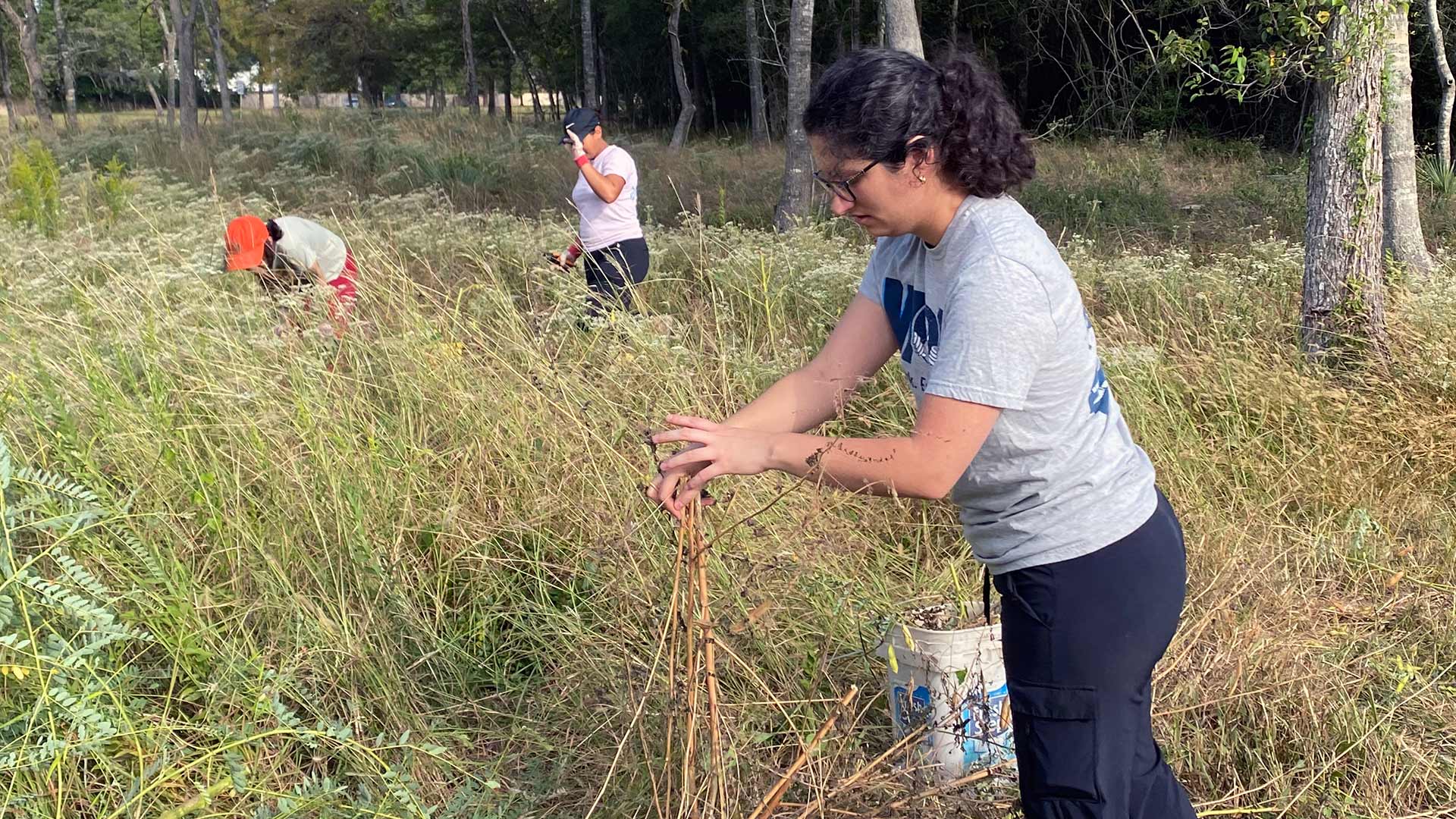- Future Students
- How to Apply
- Visit UHCL
- Admitted Students
- Tuition, Costs and Aid
- Degrees and Programs
- Contact Admissions
- Current Students
- Class Schedule
- Academic Calendar
- Advising
- Events
- Library
- Academic Resources and Support
- Student Services and Resources
- Alumni
- Lifetime Membership
- Alumni Events
- Update Your information
- Awards and Recognitions
- Give to UHCL
Planting event to help UHCL restore native plants to campus, support environmental sustainability
October 11, 2022 | UHCL Staff

Being widely acknowledged as a college campus that is situated on a beautiful wildlife preserve goes beyond just the obvious curb appeal. University of Houston-Clear Lake considers the natural beauty of its campus one of its greatest assets, and has put resources into demonstrating the importance of students, faculty and community partnering to make the campus more environmentally sustainable.
“Part of who we are is our beautiful, natural campus,” said Jeffrey Fato, co-founder of UH-Clear Lake’s Environmental Justice Association, a student organization committed to creating a positive environmental impact on the campus community.
Fato, who is working toward his Master of Science in Environmental Science, said that in an effort to restore natural habitats that once existed on the UHCL campus, the group consulted with the Environmental Institute of Houston. Together, they came up with a plan to bring a garden featuring over 80 native wildflower and grass species, known as a “pocket prairie,” to campus.
“At the end of fall 2021, we removed non-native, invasive trees and overgrown plants from the acre of land at Entrance 2, and in the spring, we encouraged a lot of volunteers and made it a pocket prairie site,” he said. “In doing so, we saved some of the oldest trees on our campus.”
Fato said that with the help of students and volunteers, the area was seeded in mid-March and is now growing beautifully, adding that these specific plants provide so much to the ecosystem in the area with their root systems helping increase water infiltration so that rain will inundate the soil rather than create runoff.
“This is floodwater damage prevention,” he said. “These plants also store atmospheric carbon and return nutrients into the ground. Other prairie restoration efforts at the UHCL Nature Trail have also been very successful.”
However, due to a fairly significant drought over the summer, Fato said there were some patches on the site that did not establish themselves well.
“That’s why, in those areas that aren’t growing as well, we have prepared pots with native plants and wildflowers, like the Texas bluebonnet, and are inviting everyone to help us take those pots and plant them there to restore the environment and bring back the plants that will do the most good,” he said.
The planting event will take place Saturday, Oct. 22, beginning at 8:30 a.m. with a check-in at the STEM and Classroom Building, Lecture Hall 1203. All are welcome.
“One of our goals is for this pocket prairie to be a living lab, where the campus and the community can come and receive hands-on information — not just about recognizing the plants, but about the benefits of investing in green infrastructure or natural capital, alongside the addition of urban infrastructure,” he explained. “As we build more buildings on campus, how will we offset our impact? New buildings put our university in a higher risk for flood damage.”
He said he hoped that tending to the pocket prairies would become part of university tradition, and would become one of the campus’s points of pride. “It’s only been there six months, and it’s already beautiful, full of bees and butterflies,” he said.
“We want to inform people of the greater good that is being done by planting these plants, and we want the pocket prairies to be seen as public,” he said. “We are demonstrating we’re using the best environmental practices possible to create environmental sustainability on our campus.”
For more information about environmental sustainability efforts on UHCL's campus, go online.






